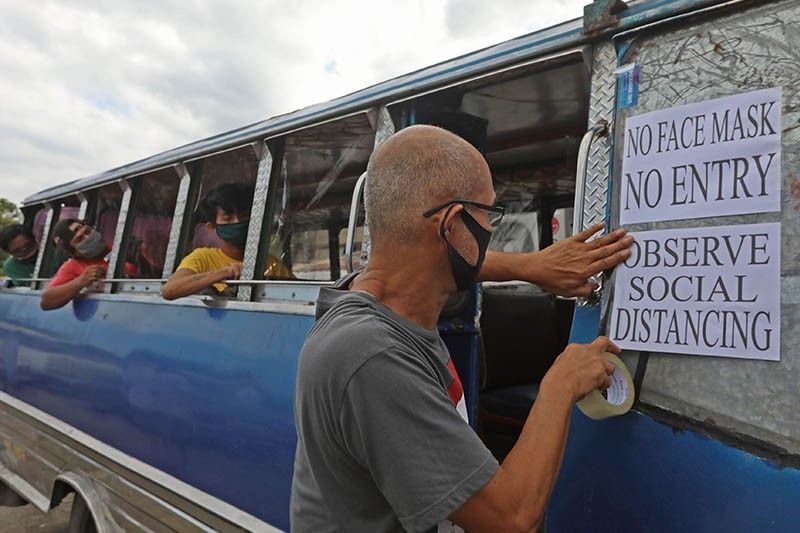Differing stimulus tack puts virus recovery plan into question

MANILA, Philippines — If the Duterte administration has its way, there should only be a single fiscal stimulus bill to help the economy bounce back from the damage of the coronavirus disease-2019 (COVID-19).
Two economic rescue bills advanced at the House of Representatives on Tuesday in response to a clamor for a bigger government stimulus to avert a higher economic fallout from the pandemic. But the two bills go in direct contrast to what the Executive department wants for a stimulus measure: one that respects the boundary of the state budget and puts the deficit in check.
For the National Economic and Development Authority (NEDA), a lone stimulus bill, if they are to agree to it, would suffice.
“(It’s) better to integrate and have one recovery bill on spending,” Acting Socioeconomic Planning Secretary Karl Kendrick Chua said in a Viber message.
While the government expressed support to House Bills 6606 and 6709, a key contention on legislative hearings is the whopping P2 trillion the measures require to fund contingency and recovery projects against COVID-19.
The price tag is the combined amount required by HB 6606 or the Philippine Economic Stimulus Act (PESA) and HB 6709 or the COVID-19 Unemployment Reduction and Employment Stimulus (CURES) which both passed different House committees on Tuesday. Plenary deliberations had since started for PESA, while CURES will undergo another set of hearings from a different committee.
Chua aired the same concern through his statement before the House social amelioration cluster that passed CURES. “We support the intention of the bill to help us recover, to support the economy and its people,” Chua said, in a statement delivered by NEDA’s Desiree Narvaez.
“However, we would like to balance the proposed CURES Fund with aims of fiscal sustainability,” she added.
Different priorities
Under CURES, the government will be mandated to allocate P500 billion for three years in the so-called CURES Fund which will be “automatically” allocated to infrastructure projects in the health, education, agriculture and local livelihood sectors. The budget department has sought clarity from the bill’s proponents on where to source such a staggering amount.
“This will be over and above the GAA (General Appropriations Act),” House Deputy Speaker Luis Raymund Villafuerte Jr., the bill’s primary author, told the hearing.
PESA, meanwhile, also commits to spend P580 billion in “stimulus” but Marikina Rep. Stella Luz Quimbo said the bill “does not require additional appropriations.” That said, she stressed that nothing prevents the Executive department to tap “additional sources of financing” to finance the measure such as borrowings through bond issuances and loans.
This is where legislative and Executive plans come in direct contrast. Chua and Finance Secretary Carlos Dominguez III have stressed the need to keep the budget deficit contained after widening to 8.1% of gross domestic product (GDP) this year. From that level, the Duterte administration sets to bring the deficit lower to 5% of GDP by the end of President Duterte’s term in 2022. Higher spending for PESA and CURES appear to prevent this from happening.
On top of that, economic managers are also pushing their own economic bills namely Bayanihan II and the Corporate Recovery and Tax Incentives for Enterprises Act (CREATE) bill, which they believe are fitter in targeting assistance to key sectors affected by the pandemic.
CREATE is essentially the revised version of Corporate Income Tax and Incentives Rationalization Act (CITIRA), which now aims to instantly lower corporate income tax rates to 25% upon passage, while keeping fiscal perks intact for longer periods. Bayanihan II makes use of the existing P4.1-trillion budget, while asking an additional P130 billion mostly going to government banks as fresh capital for lending. The tack was stressed by the finance department in the CURES hearing.
“The best way to boost recovery, stimulate domestic demand and protect jobs and avoid fiscal deterioration is to…boost the capitalization of the Land Bank of the Philippines, the Development Bank of the Philippines and PhilGuarantee (Philippine Guaranty Corp.)…,” said Rowena Sta. Clara, finance division chief.
No overlap
Despite the contradiction on what lawmakers are deliberating and what the Executive wants, Albay Rep. Joey Salceda, chair of the House ways and means committee, said there should be no problem in the end. “We are all part of the government,” he said in a text message.
Villafuerte also allayed fears of overlap between CURES and PESA. “Let’s separate public incentives and infrastructure. PESA is essentially an incentive bill, while CURES is an infrastructure bill,” he said.
That said, he remained open to merging PESA and CURES. “We can either consolidate provisions later on. We understand that there is a limitation in money,” he added.
For now however, it remains unclear how the government is planning to implement PESA or CURES if they are passed in their current forms.
- Latest
- Trending






























